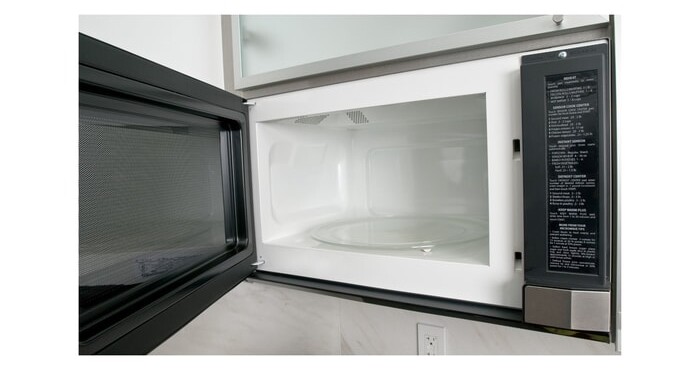More often than not we forget that putting spoons in the microwave is not right. To answer your question, you should not put spoons in the microwave because metal in the microwave causes fireworks.
Metals such as forks, spoons and knives are great conductors of electricity; they contain a lot of electrons which move freely.
When the microwave hits the metallic objects, they get reflected which ends up causing problems. If there’s not sufficient material in the microwave to absorb the reflected electrons, the spoon in the microwave or a part of the microwave will arch and it looks like a small bolt of lightning.
This bolt of lightning can be quite damaging and in extreme cases, it can start a fire. To understand why putting spoons in the microwave is dangerous, it is important to understand how the microwave works.
How does the microwave work?
There’s a little gadget in the microwave by the name magnetron which releases electrons. These electrons bounce around in the microwave which in turn cause the cavities built up in the microwave thus releasing waves at certain frequencies.
These waves are the ones that heat whatever you put in the microwave. The food or fluids that you put in the microwave absorb the waves which in turn cause the water waves to bounce thus causing the food to heat.
Substances that absorb the heat rather than reflect it for example some polymers and ceramics convert the microwave energy into heat thus helping in heating your food or water faster.
What Happens When You put a Metal Spoon in the Microwave
Metals have many electrons that get pulled by the microwaves. These electrons cause the thin metal sheet to heat up quickly which might result in the appliance getting burnt.
Metal with kinks are even worse because once they heat, the electrons tend to concentrate on certain areas which causes them to bounce onto the walls of the microwave.
The bouncing electrons keep the electricity from entering the metal which ends up being reflected. When the microwaves are reflected instead of being absorbed, they create a charge density such that the electrical potential in the spoon exceeds the dielectric breakdown of the air.
This results into your spoon arcing inside your microwave thus creating another electrical conductor with lower potential which happens to be the walls of the microwave.
When this happens, the electrical sparks can burn holes in the metal walls. The sparks are also capable of burning the magnetron in your microwave.
In the modern silent microwaves, these sparks generate a surge that damages the sensitive microelectronics which kills your microwave or make it unsafe to use.
Something else that might render your microwave useless is trying to heat food that’s been wrapped with an aluminum foil or a metallic container.
When the energy is not absorbed properly, it can’t go anywhere and its only escape is bouncing up inside the microwave thus damaging the magnetron.
Trying to heat your food with a spoon inside the container means the food will not heat as it should. This is because the spoon will absorb all the heat that’s meant to heat the food.

Conclusion on microwaving a spoon
In conclusion, putting a metallic spoon inside your microwave is not only unsafe for the microwave, it is also unsafe for you in extreme cases where a fire starts inside your microwave and causes fire.
The bottom line here is, never put any metal or metallic substance inside your microwave; it almost always results in accidents.
Other things that you should not put in a microwave are paper bags, hot peppers, travel mugs, aluminum foil, hard-boiled eggs, Styrofoam, Chinese take-outs and lidless containers

